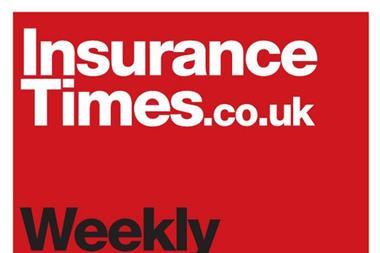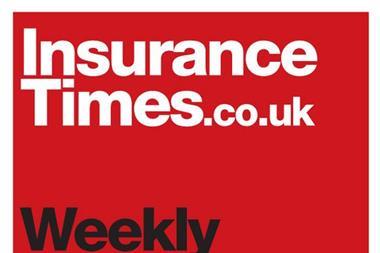IPT bolsters the Treasury, insurance protection takes a backseat and it’s still too early to tell for Irene
This week’s Insurance Times reports that revenues raised through the basic rate of insurance premium tax (IPT) shot up by 27% in the second quarter of 2011.
A HMRC bulletin, seen by Insurance Times, shows that basic rate of IPT generated £730.3m in the three months ending June. This is compared to £574.3m levied in the same quarter during 2010.
Some of that increase can be put down to a wider recovery in premiums – during the first three months of this year IPT raised £611m. However, by far the biggest share is accounted for by the hike in the basic rate from 5% to 6%, which took effect at the beginning of this year.
The figures will make happy reading at the Treasury as it struggles to balance the government’s books. It shows that IPT remains a relatively easy tax lever to pull, which increases the likelihood that Chancellor of the Exchequer George Osborne will come back to the well in years to come.
Broker Intel goes live
Broker Intel, the new financial analysis tool from Insurance Times, went live this week. The service is free to use and is designed to let anyone in UK GI dig into the financial performance of the top 50 brokers. You can break down the top 50 by sector, view historical data going back three years, benchmark performance against industry averages and compare between brokers. Click here to try it.
Added extras push up profits
Insurance protection, it seems, is increasingly being sidelined by the additional products and services that are sold alongside it, especially when it comes to growth in tough conditions.
Last week, we saw Admiral’s ancillary income rise to 54% of its UK motor pre-tax profit. This week, Abbey Protection managing director Chris Ward revealed that his firm’s consultancy and services products, offered alongside the legal and tax fees insurance products it specialises in, were the main driver behind the company’s 6% revenue growth in the first half.
Of course, as Ward pointed out, the insurance product remains the core element of these additional services – something that will not change. But he added that the opportunities for significant growth were in consulting and additional services. He also argued that these offerings were key to retaining customers, and allowed the company to maintain pricing discipline in its underwriting arm.
The message seems to be, then, that getting ahead in insurance means offering more than just insurance.
Early days for Irene loss estimates
Loss estimates from Hurricane Irene, which pounded the US East Coast last weekend after ripping through the Caribbean, have been a recurring theme in the news this week, although eagle-eyed readers will have spotted big differences in the figures. AIR Worldwide, for example, put the US portion of the insured losses at between $3bn and $6bn, while fellow risk modeller EQECAT put the US losses at between $1.5bn and $2.8bn.
These discrepancies highlight not only the different approaches and assumptions made by the various risk modelling firms, but also how loss estimates so soon after an event should be taken with a healthy pinch of salt.
Crash for cash
The Insurance Fraud Bureau’s (IFB’s) ‘crash for cash’ research has shown that Birmingham is the most affected area for the sixth consecutive quarter.
The IFB Q2 2011 research pinpointed the top twenty areas of the UK affected by ‘crash for cash’ activity, and found that Sheffield and Manchester remain in second and third place respectively, with Nottingham coming fourth and Cardiff fifth.






































No comments yet